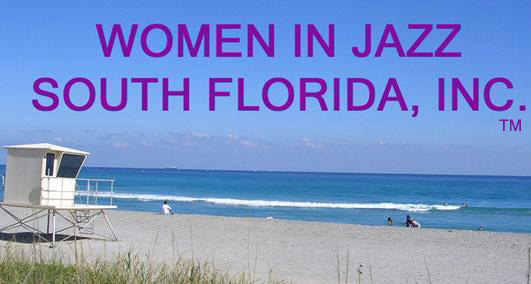The
object is to get the world's leaders, urban or otherwise, to understand
that artists bring the message that we ALL are creative beings.
Traditionally, the powers-that-be exploited artists with no benefits
other than the fee to produce a painting or do a performance. Everyone
else has a pension, retirement and health benefits but artists. Yet, what
artists produce brings heightened joy to others.
School officials know that by eliminating arts, they create robotons that
follow rules without question. This is why kids kill kids and why adults
kill each other. THEIR CREATIVITY is stunted by the education system.
I am no more creative than the next person. I'm fortunate to have been
educated by parents who love the arts.
As the founder of Women in Jazz South Florida, Inc. and a 38-year veteran of the Performing Arts, I am fully aware of the benefits musicians reap from musical studies, most importantly, discipline, dedication and ability to make a living from something they love to do, not to mention the opportunity to travel to foreign shores as Ambassadors of Peace, where they are appreciated by people of varying cultures and backgrounds.
Every professional musician and artist is an entrepreneur that can enhance the learning process of adults and children they come in contact with. Musicians learn how to be financially stable, especially in economic times like these. What music and art teach the artist is that they have a gift that they are responsible for sharing with others and that compensation is certainly forthcoming.
My contention is that happiness is the greatest cure for ill health. Music and Art are at the top of the list of conditions that cause happiness. -- Diva JC
![]()
November 22, 2009
Benedict Woos Artists, Urging ‘Quest for Beauty’
By RACHEL DONADIO
VATICAN CITY — In 1512, Raphael
finished his ruminative portrait of Pope Julius II, who commissioned
Michelangelo to paint the Sistine Chapel ceiling. In 1999, the Italian
conceptual artist Maurizio Cattelan produced “The Ninth Hour,” a wax
sculpture of Pope
John Paul II struck down by a meteorite.
Somewhere along the way, the Vatican’s
relations with the art world had clearly gone astray.
And so in an effort to improve the Catholic Church’s
engagement with contemporary artists — and perhaps put a gentler face on
a contentious papacy — the Vatican invited more than 250 artists,
architects, musicians, directors, writers and composers for an audience on
Saturday with Pope
Benedict XVI.
Sitting before Michelangelo’s “Last Judgment” in
the Sistine Chapel, after a choir sang music by Palestrina, Benedict urged
them to embark on “a quest for beauty.” In what he called “a
cordial, friendly and impassioned appeal,” he told his guests to be
“fully conscious of your great responsibility to communicate beauty, to
communicate in and through beauty.”
About half of the 500 invited artists did not attend,
including Bono
from the rock band U2.
But the meeting still seemed a public relations success in light of the
fierce controversies that have made this papacy less than loved by the
downtown art scene, and made that art scene unbeloved by a pope who
decries nihilism and relativism at every turn.
It was also a triumph for Archbishop Gianfranco Ravasi,
the director of the Pontifical Council for Culture, who organized the
event and is widely seen as a rising star in the Vatican hierarchy. He is
also leading the charge for the Vatican to have its own pavilion at the
next Venice
Biennale art exhibition in 2011.
He said the aim of the event on Saturday was “to
re-establish a dialogue” between the church and artists “that’s
necessary and fertile for both.”
The artists in attendance seemed genuinely grateful for
the opening.
“It’s quite an emotional experience,” said Zaha
Hadid, an Iraqi-born architect whose new Maxxi museum of
contemporary art is the most admired new building in Rome in years. The
architect Daniel
Libeskind called the event an “amazing step.”
“There’s real potential for something interesting
here,” he said.
The crowd, which came from around the world but largely
from Italy, also included the composers Ennio
Morricone and Arvo Part, the artists Anish
Kapoor and Jannis Kounellis, and the Italian film directors Nanni
Moretti and Matteo Garrone.
The artists received medals from the Vatican and feasted
on a banquet, with the renowned sculpture of Augustus of Prima Porta as a
backdrop.
The Italian artist Mimmo Paladino suggested that it was
now up to the Vatican, not artists, to turn the dialogue into a reality,
perhaps even by commissioning art.
“I wouldn’t rule it out,” Archbishop Ravasi said.
“But we’re not in the Renaissance.”
 Bill
Viola, an American video artist whose work often reinterprets
Christian motifs, played down any notion that the Vatican was trying to
co-opt artists like him into helping improve its image. For centuries, he
said, artists have struggled with “walking that fine line between
creative freedom, between bending the rules; how far can you bend the
rules before you break them?” Mr. Viola said.
Bill
Viola, an American video artist whose work often reinterprets
Christian motifs, played down any notion that the Vatican was trying to
co-opt artists like him into helping improve its image. For centuries, he
said, artists have struggled with “walking that fine line between
creative freedom, between bending the rules; how far can you bend the
rules before you break them?” Mr. Viola said.
Diva Joan Cartwright



Pope Julius II Portrait by Raphael
Sistine Chapel

Michaelangelo (self portrait)

The Ninth Hour by Maurizio Cattelan


Archbishop Ravasi
We salute CNN Heroes
MESSAGE TO THE NATIONAL URBAN LEAGUE
Once we understand that taking Music and Art out of school and paying parents to feed their children Ritalin to counteract Attention Deficiency Disorder, which is a direct result of NOT learning how to access their creativity, we will honor artists by engaging them to develop and implement programs and workshops like the ones I've presented to you. Available at this link - www.fyicomminc.com/workshops.htm
The Urban League's Statement is as follows:
Our
Strategy - The National Urban League employs a five-point
approach to provide economic empowerment, educational opportunities and
the guarantee of civil rights for African Americans.
As
the founder of Women in Jazz South Florida, Inc. and a 38-year
veteran of the Performing Arts, I am fully aware of the benefits
musicians reap from musical studies, most importantly, discipline,
dedication and ability to make a living from something they love to do,
not to mention the opportunity to travel to foreign shores as
Ambassadors
of Peace, where they are appreciated by people of varying cultures and
backgrounds.
Education
and Youth Empowerment ensures the education of all children by
providing access to early childhood literacy, after-care programs and
college scholarships.
My
personal experience within the education system includes sharing the
stories of Women in Jazz and Blues with thousands of children in
Florida, New York, Georgia, China, Japan and Europe. In 1997, 1998 and
2000, I was the recipient of nearly $15,000 in Student Enrichment in the
Arts grants (SEAS), through Broward County Schools.
Right
now, I'm working on our organization's directory listing and a grant
proposal for the Broward Cultural Arts Council to take our programs into
the schools and after-care programs in 2010.
In
the past 12 years, I've presented at several colleges, including FAU,
FIU, MDCC, BCC, NOVA SE and York College, where I've been scheduled to
return on March 4, 2010. This one-hour presentation is fully-documented
in photographs and videos on my websites: www.wijsf.org,
www.joancartwright.com
and www.fyicomminc.com.
Each
time we bring the story of Women in Jazz and Blues to students, we
receive positive feedback from them, their teachers, principals and
parents. This is why we work to continue bringing this program to
schools and events to the community. See our concert series at www.floridajazznetwork.com
Economic
Empowerment invests in the financial literacy and employability
of adults through job training, homeownership and entrepreneurship.
Every
professional musician and artist is an entrepreneur that can enhance the
learning process of adults and children they come in contact with.
Musicians must learn how to be financially stable, especially in
economic times like these. What music and art teach the artist is that
they have a gift that they are responsible for sharing with others and
that compensation is certainly forthcoming.
Personally,
I've retired from the music business three times (1996, 1999, 2001) and
I've returned, purely on the basis that music is my God-given talent
that I MUST share with the world. It is the "talent" that I
must use for the good of all. I must not bury it, take it for granted or
squander it. See The
Parable of the Ten Talents
I
believe I understand that, now, and I am determined to help others
recognize the value of African American music, art and culture. My book,
A History of African-American Jazz and Blues expands on why so
many African-Americans have not reaped financial benefits of their
artistic production. It's tied up with cultural politics and I believe
this book qualifies as required reading for every African-American man,
woman and child. The book contains interviews with jazz greats Quincy
Jones, Dewey Redman (father of Joshua), Lester Bowie (Chicago Art
Ensemble) and Sandy Patton (Vocal Instructor, Swiss Jazz School). If we
neglect to understand the value and importance of our cultural
production, the dominant society will continue to be the only benefactor
of it's fruits, i.e., record companies, publishers, promoters and
distributors.
Blues
and Jazz are "the only original American art forms" and have
been designated by Congress as a National
Treasure!
See the attached letter from First Lady Michelle Obama, indicating
that we have been in touch with her regarding our organization.
Health
and Quality of Life Empowerment promotes community wellness
through a focus on prevention, including fitness, healthy eating and
access to affordable healthcare.
This
President's highest priority has been health care reform. My contention
is that happiness is the greatest cure for ill health. Music and Art are
at the top of the list of conditions that cause happiness. I could write
a treatise on this. This video sent to me earlier in the week speaks
volumes about the healing properties of music. Patrick plays! www.youtube.com/watch?v=9xwCG0Ey2Mg
Civic
Engagement and Leadership Empowerment encourages all people to
take an active role to improve quality of life through participation in
community service projects and public policy initiatives.
There
can be no doubt that musical events unite a community, if only for one
hour. You live in New York City. Have you been to the Jazzmobiles,
during the summer, attended by thousands of New Yorkers? I was 19, when
I attended some of the first concerts in 1968-70. At Grant's Tomb, circa
1984, I performed with some of the greatest living jazz artists,
including Frank Foster, Frank Wes and George Coleman. This experience
led me to where I am as a jazz artist, today. Since then, hundreds of
young musicians have been influenced by these concerts and by the
education program developed by this organization. www.jazzmobile.org
- It is our mission to continue this legacy with WOMEN IN JAZZ SOUTH
FLORIDA, INC. - www.wijsf.org
Civil
Rights and Racial Justice Empowerment guarantees equal
participation in all facets of American society through proactive public
policies and community-based programs.
The
impact that Blues and Jazz artists have had on the global society is
undeniable. This truth fills many books about musicians like Ella
Fitzgerald, Mary Lou Williams, Louis Armstrong, Duke Ellington and so
many more who traveled to foreign lands as representatives of the
American people and, African-American people in particular, bringing immeasurable
joy, despite obstacles they faced as people of color in the United
States, under Jim Crow Laws declaring them less than whole persons. They
were applauded on other continents and abused at home. But that didn't
stop them from being the messengers of peace, hope, love and community
that they were born to be. Their stories must continue to be told
to urban children, children in the suburbs and on farms, where many of
them came from. Our organization serves that purpose and we trust that
the National Urban League recognizes the value and importance of that
work.
Calendar
our Women in Jazz Presentations on Thursday, March 4,
2010 at York College and Friday, March 5, at the Langston Hughes Library
in Queens.
Love
and music,
Joan
Cartwright
Founder
& Executive Director
Women
in Jazz South Florida, Inc.
wijsf@yahoo.com
divajc47@yahoo.com

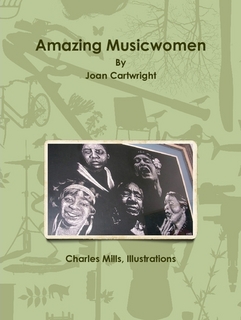
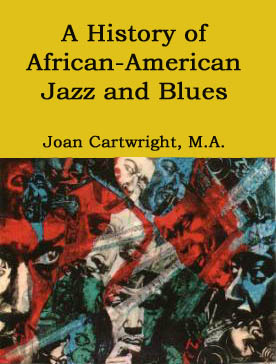
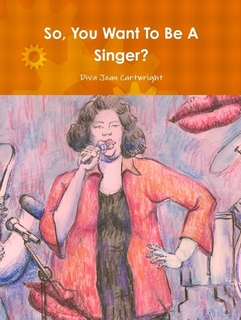
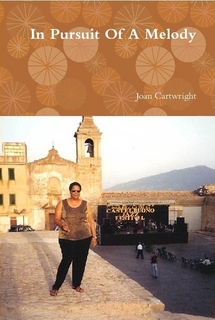
Last week Americans for the Arts released the National Arts Index. This is a one page summary of the report www.americansforthearts.org/go/artsindex and an article (below) from the Washington Post.
The Nationals Arts Index, a new survey by Americans for the Arts, paints a troubling picture for arts organizations
By Jacqueline Trescott
Thursday, January 21, 2010; C02
While the number of arts organizations increased rapidly over a recent 10-year span, the percentage of people attending arts events declined, a new national survey by the nonprofit group Americans for the Arts reported Wednesday.
This issue of supply and demand in the arts world is a troubling one, said the authors of the National Arts Index, because many groups have financial troubles and people of all ages are discovering new ways to experience the arts, including the Internet.
"Audience demand has failed to keep pace" with this boom in opportunities for arts participation, said Randy Cohen, the vice president for local arts advancement at the Americans for the Arts. "There is a new arts organization created every three hours."
Straitened financial circumstances and audience drift are issues that have been festering for years, and the recent recession didn't help. The analysts behind the index hope their data -- taken between 1998 and 2008 -- will clarify the predicament the arts find themselves in and provide a roadmap for new artistic and business models. "This first-ever annual measure confirms observations we have had for years," said Robert L. Lynch, the group's president and chief executive.
Attendance at art museums was down 13 percent from 2003 to 2008, the index found, while audiences at popular music events were down 6 percent. More people are taking classes in knitting and ceramics, as an arts participation survey by the National Endowment for the Arts reported last year.
Increasingly, people turn to the Internet for their arts consumption, whether they're seeking snippets of concerts or replays of stand-up comedy routines. The remote arts experience, Cohen pointed out, is also made easier by the explosion of offerings on cable television and simulcasts of performances by such groups as the Metropolitan Opera.
The study was prepared over the past 4 1/2 years and drew on 76 annual reports, such as the report from the National Association of Music Merchants on musical instrument sales and attendance numbers for Broadway and touring shows prepared by the Broadway League. Other information was taken from government, business, foundation and academic sources. The index expanded the reach of many studies to include data on both nonprofit and for-profit institutions, as well as individual and amateur work.
Despite the mixed prognosis on the arts, artists and arts supporters alike have been intensely dedicated to keeping the arts on the front burner of policymakers. The U.S. Conference of Mayors has made the arts, and the resultant revenue and downtown revitalization, a centerpiece of its members' goals. In addition to urging a Cabinet-level position on the arts, Mufi Hannemann, the mayor of Honolulu -- in Washington for the winter meeting of mayors -- called for a White House summit on the arts. "At the end of the day, the arts define the essence of the soul of a city," Hannemann said.
Rep. Louise M. Slaughter (D-N.Y.) joined the news conference at the National Press Club and said the economic benefits to the federal Treasury and individual cities need to be emphasized. "The arts need not apologize to anyone. Art pays its way," Slaughter said.
In the index, the health of the arts was measured by finances, capacity, participation and competitiveness. "Arts participation is falling because the alternative uses of time are winning out," said Arthur C. Brooks, the president of the American Enterprise Institute.
Index supporters said arts groups face many challenges, but most are likely to begin an economic rebound in 2011. Cohen said about one-third of arts groups are not making their budgets. Bill Ivey, the former NEA chairman, said it was troubling that the number of trained artists graduating from college had grown while the overall employment of artists was only slightly increasing.
View all comments that have been posted about this article.







